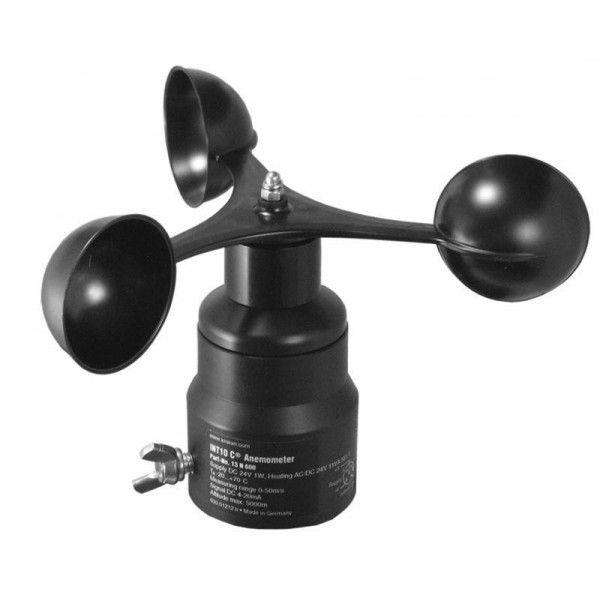How to Maintain and Look After Your Anemometer to Make Certain Long Life
How to Maintain and Look After Your Anemometer to Make Certain Long Life
Blog Article
Anemometers Unveiled: Understanding Their Significance in Environmental Surveillance and Precaution
The role of anemometers in ecological monitoring and safety and security steps is commonly underestimated, yet their significance is undeniable. From meteorology to air travel safety, anemometers play a crucial duty in providing exact data that notifies decision-making procedures and enhances general security.
History of Anemometers
The advancement of anemometers can be mapped back to the ancient human beings where rudimentary wind gauging gadgets were first utilized. These early wind dimension tools laid the foundation for the development of much more sophisticated anemometers with time. Among the earliest well-known anemometers was the hemispherical cup anemometer developed by Leon Battista Alberti in the 15th century. This design was composed of four hemispherical cups that accumulated wind power, offering a dimension of its strength based upon the speed of rotation.
Over the years, innovations in modern technology led to the growth of even more modern anemometers, including ultrasonic anemometers and laser Doppler anemometers, providing enhanced accuracy and performance in determining wind speed and instructions. The background of anemometers showcases an exceptional journey of development and progression in the area of meteorology.
Types of Anemometers
Throughout the field of weather forecasting, various sorts of anemometers have actually been established to accurately measure wind speed and direction. One of the most typical type is the cup anemometer, which is composed of 3 or 4 mugs placed on horizontal arms that turn with the wind. As the cups rotate, the speed at which they revolve is straight proportional to the wind speed. An additional commonly used type is the vane anemometer, which includes a tail or fin that aligns itself with the wind instructions. This positioning allows the tool to establish the wind direction. Sonic anemometers utilize ultrasonic signals to measure wind speed and instructions accurately. They are generally used in study applications because of their high precision. Hot-wire anemometers run based on the principle that the cooling result of wind on a heated cord is proportional to the wind rate. These anemometers appropriate for gauging reduced wind speeds with high precision. Each sort of anemometer has its staminas and is picked based on the details demands of the surveillance task at hand.
Applications in Meteorology
Having actually reviewed the various types of anemometers made use of in weather forecasting for measuring wind speed and direction, it is necessary to explore their practical applications in the field. Anemometers play an important function in weather forecasting by giving exact and real-time data on wind conditions (anemometer). Meteorologists utilize anemometers to keep an eye on wind speed and direction to anticipate climate patterns, issue cautions for extreme climate events like tornados, cyclones, and twisters, and analyze atmospheric conditions for aeronautics safety and security
In weather forecasting, anemometers assist in comprehending regional and neighborhood wind patterns, which are essential for anticipating weather changes and determining climatic fads. These gadgets are also made use of in research to examine microclimates, urban warmth islands, and air pollution dispersion. In addition, anemometers are used in farming to optimize crop management methods, such as irrigation and chemical application, based on wind problems.
Value in Aviation Security
An integral element of making sure aeronautics safety and security depends on the meticulous surveillance of wind problems utilizing anemometers. Anemometers play a vital role in aeronautics by giving real-time information on wind speed and direction, helping pilots in making informed decisions throughout liftoff, touchdown, and flight. Uncertain and strong read more winds can dramatically impact airplane procedures, making it vital for air travel authorities to depend on precise wind dimensions to make certain the security of passengers and crew.

In the vibrant environment of air travel, where even minor adjustments in wind speed and direction can have extensive results, anemometers stand as vital devices for promoting risk-free and protected air traveling.
Function in Environmental Study
How do anemometers contribute to innovations in environmental research study? Anemometers play a crucial role in ecological research study by providing vital information on wind rate and direction. This information is vital for comprehending various atmospheric processes, such as air contamination dispersion, weather condition patterns, and environment adjustment. By properly gauging wind qualities, anemometers help researchers evaluate the movement of pollutants airborne, assess the effect of commercial discharges, and forecast the spread of impurities in the setting.


Conclusion
In final thought, anemometers have played a critical duty in check my blog ecological surveillance and safety and security procedures. With an abundant history and various kinds readily available, these gadgets have been extensively utilized in weather forecasting, air travel safety, and ecological study. Comprehending the value of anemometers is important for accurately gauging wind rate and direction, which is vital for anticipating weather patterns, ensuring secure aeronautics operations, and performing ecological studies - anemometer. Their payments to these fields can not be ignored.
One of the earliest known anemometers was the hemispherical mug anemometer developed by Leon Battista Alberti in the 15th century. Over the years, developments in modern technology led to the advancement of more modern-day anemometers, consisting of ultrasonic anemometers and laser Doppler anemometers, offering boosted precision and effectiveness visit this web-site in gauging wind rate and direction. Hot-wire anemometers run based on the concept that the cooling impact of wind on a warmed wire is symmetrical to the wind speed. Meteorologists make use of anemometers to keep an eye on wind speed and instructions to anticipate weather patterns, problem cautions for serious weather condition events like typhoons, twisters, and tornados, and assess atmospheric problems for aeronautics safety and security.
Comprehending the relevance of anemometers is essential for precisely gauging wind speed and direction, which is vital for predicting weather condition patterns, making sure secure aviation operations, and conducting environmental studies. (anemometer)
Report this page